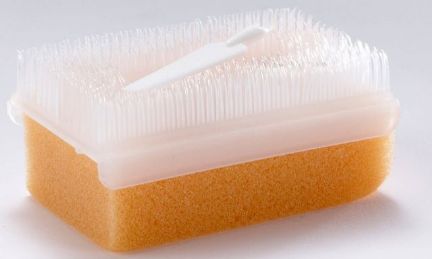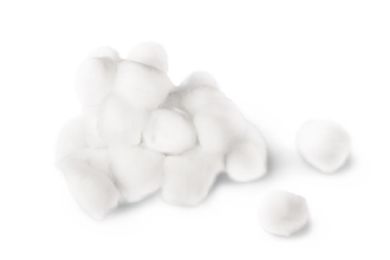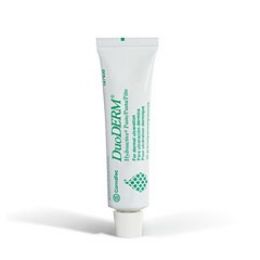


















.jpg&newheight=260&quality=80)
What is a Wound Dressing?
A wound dressing is a medical tool that is used to cover an injury; specifically, it is the gauze or sterile cotton that is applied to the wound. It is different from the bands or tape that are used to hold the dressing in place. Since there are many medical supplies that incorporate both bandage and dressing, they are often used interchangeably in casual language. Wound dressing is important to help guard against infection. It protects a wound from debris that could carry bacteria and start an infection. However, before applying dressing to a wound, it is crucial to thoroughly clean the wound. This should help wash away any foreign material that entered it when the injury took place.
One of the most important things to remember when dressing a wound is that the materials that are used must be sterile. To stay sterile, dressings and plasters are usually packaged individually. If a dressing is not available right away, use the cleanest cloth initially to cover the wound until a sterile dressing can be obtained. To minimize the risk of infection, it is advisable to use an antibiotic cream or ointment in addition to a wound dressing. An antibiotic cream or ointment will help further reduce this risk because even wounds that are properly cleaned and dressed can become infected.
If using a wound dressing, such as cotton or gauze, it is important to keep it in place with a bandage. While adhesive bandages can be used for small injuries, dressings are more helpful for wounds that affect larger areas of the body, or for larger wounds. When dressing a wound, be sure to follow first aid guidelines. If not familiar with first aid guidelines, try to find someone who is. Consult a medical professional if ever in doubt about the severity of an injury. They can assess the wound and decide what type of treatment and dressing is best.
What are Different Types of First Aid Supplies?
If there are young children at home, an organized container of first aid supplies is an absolute necessity. It is also a good idea to keep a few basic first aid supplies in the car since a cut may happen when reaching into the glove compartment, or while changing a tire. Wherever a good deal of time is spent, having first aid supplies handy will help take care of unexpected minor emergencies. They are intended to provide a first line of defense against the potential complications of acquiring a minor injury. A well-stocked first aid kit can be a preventative strike against having to make an unnecessary trip to the emergency room for clean-up care. Or, from suffering the effects of an infection later on. First aid supplies can also be items that help prevent minor irritations and injuries, such as insect repellent and sunscreen.
First, take note of these safety reminders. Never allow pets or children to have access to the items of a first aid kit. This means keeping the supplies stored in a linen closet or bathroom out of their reach, or even keeping the kit locked up. Certain items can be dangerous to small children and animals, such as scissors and pain medications. Plus, pets can tear up a roll of once sterilized dressing. Periodically check all of the first aid supplies to make sure they are replaced as they are used, and that medications stay within their expiration dates.
An effective first aid kit should have a combination of supplies, mainly bandages in assorted sizes. This includes small, medium, and large sterile gauze pads as well as adhesive bandages. In the event that a sprain or another reason to immobilize a limb happens, a triangular bandage, also known as a cravat bandage, is useful. It can be fashioned into a sling or tourniquet. When the need to wrap or splint an arm or leg comes up, cotton crepe rolled bandages come in handy. To make these kinds of first aid tasks easier, keep a few safety pins with the materials.
An assortment of antiseptic products is necessary to clean minor cuts and wounds before they are dressed. This includes topical antiseptic cream or ointment, alcohol-free cleansing wipes, and maybe a cream or spray designed to relieve insect bites and stings. If an encounter with poison ivy occurs, hydrocortisone cream will be helpful. Certain medications are basic first aid supplies. They include antihistamine tablets, cough syrup, and non-prescription painkillers, such as ibuprofen. Ibuprofen can be substituted with aspirin. But, aspirin is not suitable for children under 16 due to an increased risk of Reye’s syndrome.
What are Different Types of Surgical Supplies?
Surgical supplies include tools and instruments specifically made for use in surgical procedures. Some are designed for general use while others have a more specific function. Most are made of stainless steel because it does not rust or corrode as easily as regular steel. A wide range of situations can be handled in surgery with such instruments as clamps, forceps, retractors, and scalpels. Other supplies may include surgical assisting supplies, such as sponges and suction machines, or measuring devices like calipers. Grasping tools are for holding or grabbing items that are too small to be hand-held, such as forceps. They can also be used to grab objects that cannot be reached with the hands. Most grasping tools are hinged instruments with a handle on one end and blades for grabbing on the other end.
To constrict the flow of blood, surgical clamps are usually used to compress blood vessels. They are scissor-shaped with interlocking teeth near the handle. This allows a nurse or doctor to apply a specific amount of constriction to an organ or vessel. To prevent damaging soft tissue, the tips of a surgical clamp are usually rounded instead of pointed. Retractors are often used by surgeons to open and separate the edges of an incision or wound. While the surgeon is working in a particular area, retractors can also be used to hold organs in place. A retractor is generally a hooked or curved blade with a handle.
Calipers and rulers are measurement devices which are used to measure width, length, area and volume. They are frequently used in jaw or eye surgeries when precise measurements are important. Rulers can also be used to measure the width and length of wounds. Other surgical supplies include sponges for absorbing blood and other fluids, gauze for covering wounds, and sutures for closing incisions.
Rehabmart is pleased to carry a wide assortment of superior quality wound care products from innovative and respected vendors, including McKesson Medical-Surgical, Sage and Sun Holdings, DeRoyal, Sammons Preston, Medline, BSN Medical, North Coast, and more.
Hulet Smith, OT
Rehabmart Co-Founder & CEO
lb